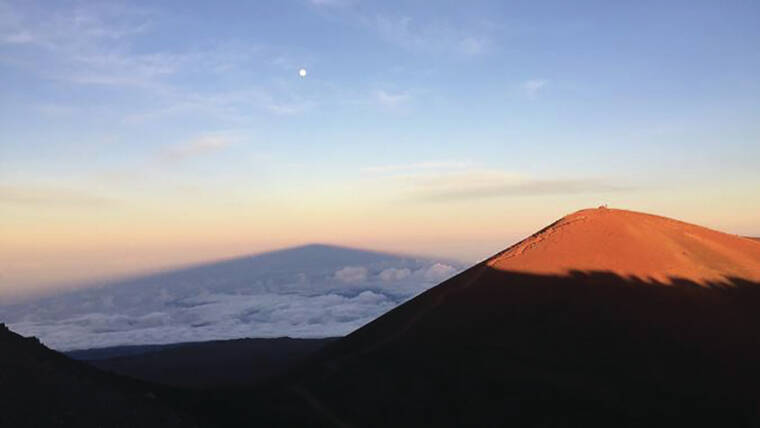The University of Hawaii Board of Regents on Thursday approved a new Maunakea Master Plan despite opposition from some community members.
The plan — titled “E O I Ka Leo (Listen to the Voices)” — replaces the previous draft that was approved in 2000 and attempts to reduce UH’s footprint on the mountain and address concerns that the university has not sufficiently engaged Native Hawaiians in land management decisions.
Greg Chun, executive director for UH’s Center for Maunakea Stewardship, said during the meeting that the new plan sets a commitment to have no more than nine astronomical facilities on the summit lands by 2033, a promise that the previous plan did not make.
One of those facilities may or may not be the Thirty Meter Telescope, Chun said, as the new plan does not require that the controversial observatory be built.
That year also is the same year that UH’s lease of the summit lands from the state is set to expire. Chun said that having an up-to-date management plan is required for UH to receive a lease extension beyond 2033.
“This plan is based on the idea of ‘let’s make better use, and smarter use, of what we have,’” Chun said.
Chun said the new plan was formulated based on community input, extensive meetings with Native Hawaiian and other community members, and the results of a 2020 Department of Land and Natural Resources study assessing UH’s stewardship of the mountain.
But despite this, public testimony at Thursday’s meeting was largely negative. Dozens of testifiers commented via livestream, nearly all of which denounced the plan and urged the board to reject it, and for UH to relinquish management of the mauna.
“Do you own your home?” asked testifier Tara Rojas. “If you rented out your home, would you let your tenant do whatever they wanted with it for 50 years?”
Fellow testifier Bianca Isaki said the legitimate concerns of community members are instead being used as statistics to validate decisions that they oppose. She and several other testifiers pointed out the irony of the plan being titled “Listen to the Voice” when they have been repeatedly demanding that the university cease development on the mountain for decades.
Others pointed to the Red Hill water contamination problem as a warning for how development will damage Hawaii’s environment.
“Aloha ‘aina will defeat the (Institute for Astronomy), aloha ‘aina will defeat UH, aloha ‘aina will defeat Manifest Destiny!” said testifier Kaleikoa Kaeo.
One of the few positive verbal comments at Thursday’s meeting was from John O’Meara, chief scientist for the W. M. Keck Observatory, speaking for all of the Maunakea Observatories. But even he, although broadly supportive of the plan, said the observatories wanted more details in the plan about opportunities to form partnerships with indigenous communities.
Meanwhile, nearly 300 pages of written testimony were submitted to the meeting, about 100 of which were an in-depth document by Big Island resident E. Kalani Flores commenting about the management failures of the university.
“Why should members of the public including Kanaka Maoli engage in this process when input and comments are systematically dismissed and ignored?” stated Flores’ letter, a sentiment echoed by many testifiers.
The written testimony was more balanced, with several letters expressing support for UH’s continued management of the mountain and the eventual construction of the TMT.
Most of the regents acknowledged the criticism. Board Vice Chair Alapaki Nahale-a, said he has, as a Native Hawaiian, experienced the same hurt and frustration that the testifiers expressed.
“I view Maunakea as my ‘ohana,” Nahale-a said. “Home, to me, is when I can see Maunakea. So I care how she is treated.”
Nahale-a said that, if and when a better option for management of the mountain presents itself, he will “be the first person to say UH should step aside.” But until then, he said, it is still UH’s duty to manage the mauna as best it can.
Kauai regent Robert Westerman said that the plan is still not perfect and will not satisfy everyone, but it can be improved with community input.
“To do nothing is worse than not having a plan that’s perfect,” Westerman said.
UH-Hilo Chancellor Bonnie Irwin said that the eventual update of the university’s Comprehensive Management Plan, scheduled for this year, will include more language to hold UH accountable.
Ultimately, the board voted 7-1, with three members excused, to adopt the plan. The sole negative vote came from Oahu regent Diane Paloma, who said she believed the plan needed further opportunities for discussion.
Email Michael Brestovansky at mbrestovansky@hawaiitribune-herald.com.









